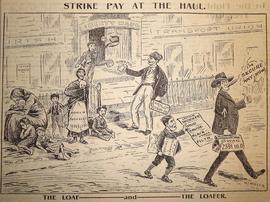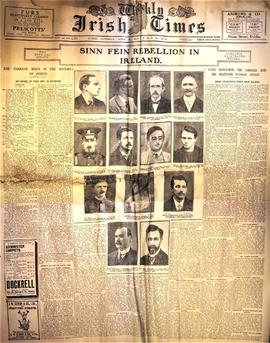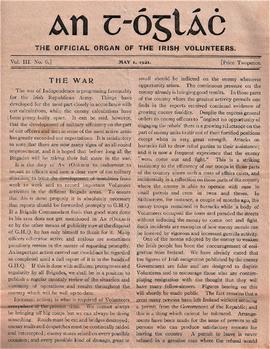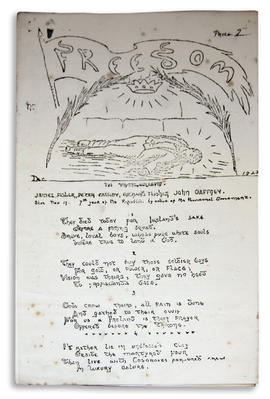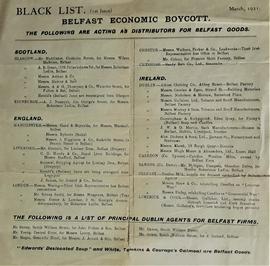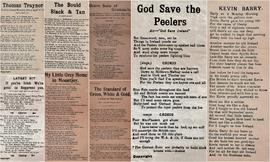Liberator and Irish Trade Unionist
- IE CA IR-1/8/1/5
- Dossier
- 23 Aug. 1913-22 Nov. 1913
Fait partie de Irish Capuchin Archives
'The Liberator' was a weekly newspaper published by Bernard Doyle from offices in Parliament Street, Dublin. The paper espoused opposition to Jim Larkin, the trade union leader during the Dublin Lockout. Each edition featured elaborate and caustic cartoons and editorials invariably attacking Larkin. The file contains a complete bound run of this short-lived journal: 23 Aug. 1913 (Vol. 1. Nos. 1-14). The file also contains 'The Irish Trade Unionist and Labour Year Book, 1913'. Edited by Bernard Doyle, 48 pp.

